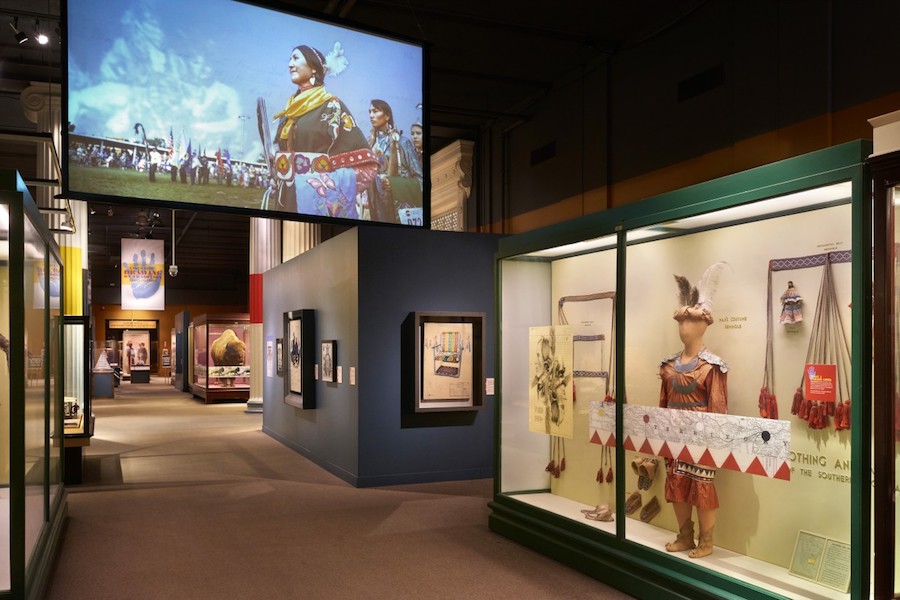NU, Field Museum and Newberry Library co-host symposium exploring “Indigenous Interventions” in museums and archives
John Weinstein, Courtesy of the Field Museum
Indigenous artist Chris Pappan’s exhibit “Drawing on Tradition” at the Field Museum. As a panelist of Friday’s symposium, Pappan utilized the exhibit to challenge viewers to acknowledge and confront contemporary Indigenous presence in museums.
November 17, 2020
Northwestern’s Center for Native American and Indigenous Research, the Field Museum and the Newberry Library co-hosted a virtual symposium Friday that challenged the historiography of “colonial institutions” such as museums, libraries and archives. Panelists at the symposium grappled with these institutions’ past, present and future relationships with Indigenous culture and history.
The idea for this symposium stemmed from the biography of Chicago businessman Edward Ayer, whose collection of Indigenous objects and documents, from books to manuscripts, were donated to the Field Museum and the Newberry Library.
“This one man’s stuff has really structured the way Native histories have been taught in the city of Chicago and also (created) the narrative of how they’ve been on display,” Meranda Roberts, a co-curator at the Field Museum and symposium co-organizer, said.
Up until two years ago, the Native North America Hall at the Field Museum had maintained the same exhibitions since the 1950s. This outdated mode of display and teaching was “problematic” because it depicted Indigenous people as “static and timeless and not existing in Chicago in the 21st century,” symposium co-organizer, CNAIR-affiliate and English Prof. Kelly Wisecup said.
“We as Native people were supposed to vanish,” Roberts, who is a member of the Yerington Paiute tribe, added. “We were supposed to die off … It’s funny because they (thought) they were saving this stuff for everyone else, but we survived.”
From the origins of Ayer’s collection to the present, Indigenous individuals have been intervening in various aspects of the curating process. The symposium featured three panels, ranging from contemporary artistic interventions to the “just futures” for colonial institutions, to discuss how Indigenous people understand these collections today.
One of the panelists, artist Chris Pappan, highlighted his exhibit at the Field Museum, “Drawing on Tradition.” Rather than a typical museum exhibit that is statically displayed behind glass, Pappan incorporated decal labels and video installations to create a more engaging experience.
“I was able to directly confront viewers with contemporary…visualizations of our existence and culture,” the artist of Osage, Kaw and Cheyenne River Sioux descent said. Pappan added he observed cognitive dissonance in viewers who had always been taught about Indigenous “extermination (and) erasure — and then the fact that there (are) living Indigenous people doing things right before their eyes.”
Regardless of the audience’s prior exposure and knowledge of local Indigenous history, the symposium encouraged participants to explore more work by Indigenous scholars and artists and consider the future role of institutions in documenting and interacting with Indigenous history.
“It’s about having an understanding that there’s a story behind this item that precedes us,” Roberts said. “And we have to honor that. We owe it to that item and those people (who created it) to tell those stories correctly.”
Email: [email protected]
Twitter: @gracewu_10
Related Stories:
— Artist Fox Maxy discusses land and Indigenous people in his short films
— Indigenous musicians virtually perform at second annual Indigenous Peoples’ Day Concert
— Artist Ernest M. Whiteman III talks about Native American art, contemporary identity


